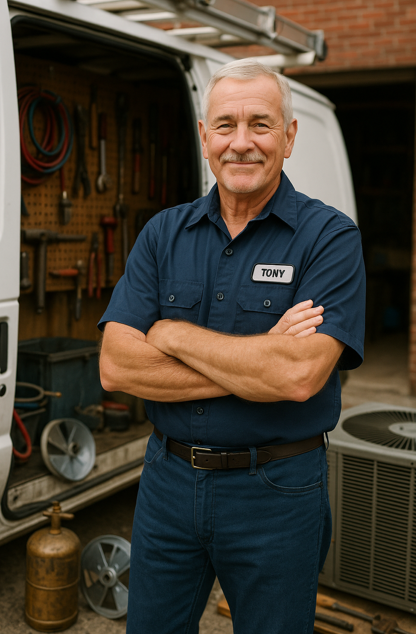Introduction: Why Your Choice of AC Stage Matters
If you’re shopping for a new air conditioner, you’ve probably come across terms like single stage AC, multi stage AC, and variable speed air conditioner. It’s confusing, I know — but knowing the difference can save you money and headaches in the long run.
From my decades installing and servicing everything from basic to high-end systems, I can tell you this: your choice between a single stage air conditioner, multi stage AC, or variable speed AC unit directly affects comfort, efficiency, and maintenance costs.
Today, I want to break it down for you — and explain why the Goodman 3 Ton 14.5 SEER2 R-32 system strikes a smart balance between cutting-edge variable speed technology and value.
Single Stage Air Conditioners: The Old Reliable — But Is It Enough?
Let’s start with the basics. A single stage AC is just what it sounds like: it’s either on at full blast or off. When the thermostat signals cooling is needed, the compressor kicks on at 100% capacity. Once the desired temperature is reached, it shuts off.
Single stage units are usually the cheapest upfront, but they have some clear downsides:
-
They cycle on and off frequently, which wastes energy.
-
Temperature swings are common, leading to uneven comfort.
-
Short cycling stresses components and can shorten equipment life.
If you want the basics covered and have a tight budget, single stage units work. But if you want quieter operation, better humidity control, and improved efficiency, keep reading.
For a technical deep dive on how single stage systems work, check out this solid overview from Energy Star.
Multi Stage AC: A Step Up in Comfort and Efficiency
Multi stage air conditioners, usually two-stage, offer a middle ground between single stage and variable speed systems. These units operate at two capacity levels:
-
Low stage (typically about 60-70% capacity) for mild cooling demand.
-
High stage (100% capacity) for extreme heat.
This lets the unit run longer at lower speed, improving humidity control and reducing temperature swings. You’ll also see some energy savings versus single stage systems.
That said, multi stage ACs don’t have the fine-tuned modulation of variable speed systems. The compressor still only operates at two speeds — so comfort and efficiency gains are limited compared to variable speed options.
If you want to see how multi stage compares, this Consumer Reports article breaks down the pros and cons nicely.
Variable Speed AC Units: The Gold Standard for Comfort and Efficiency
Now we’re getting into the big leagues. Variable speed air conditioners adjust compressor and fan speed incrementally, based on cooling demand. This means the system can run anywhere from 25% to 100% capacity, delivering the precise amount of cooling your space needs — no more, no less.
Here’s why I recommend variable speed systems, especially for homeowners and light commercial users who value comfort and savings:
-
Superior energy efficiency: Longer, gentler run cycles use less electricity than short bursts.
-
Better humidity control: The system runs longer, pulling more moisture out of the air.
-
Consistent indoor temperatures: Say goodbye to hot/cold spots.
-
Quieter operation: Variable speed motors ramp up slowly, reducing noise.
Among the best variable speed HVAC systems I’ve installed lately, Goodman’s 3 Ton 14.5 SEER2 R-32 model stands out for combining these benefits with a budget-friendly price point and eco-friendly refrigerant.
For a thorough look at why variable speed technology matters, check out this informative post from HVAC School.
Goodman’s 3 Ton 14.5 SEER2 R-32 Bundle: Variable Speed Done Right
The Goodman 3 Ton 14.5 SEER2 system pairs a variable speed compressor with an efficient air handler and uses R-32 refrigerant — the latest in environmentally responsible cooling technology.
Some key advantages:
-
14.5 SEER2 rating: Reflects efficiency under the tougher new DOE testing standard.
-
Variable speed compressor: Modulates output for balanced comfort and energy savings.
-
Multi-position air handler: Fits various installation needs.
-
R-32 refrigerant: Lower global warming potential than traditional R-410A.
This system is a great example of how modern HVAC tech is accessible without breaking the bank. If you want to understand more about R-32 and why it’s replacing older refrigerants, the Environmental Protection Agency’s page is worth a read.
Single Stage vs. Multi Stage vs. Variable Speed: Which One Fits You?
| Feature | Single Stage | Multi Stage | Variable Speed |
|---|---|---|---|
| Initial Cost | Low | Medium | Higher |
| Energy Efficiency | Lowest | Moderate | Highest |
| Comfort Consistency | Poor | Better | Best |
| Noise Level | Louder | Quieter | Quietest |
| Humidity Control | Minimal | Improved | Excellent |
| Maintenance | Simpler | Moderate | More Complex |
As you can see, variable speed AC units like the Goodman 3 Ton system offer the best mix of performance, efficiency, and comfort — especially for those ready to invest in long-term quality.
Final Thoughts from Tony
Look, if you’re still rocking a single stage AC and you’re tired of uneven temps and high electric bills, it’s time for an upgrade. But not all upgrades are created equal. A variable speed air conditioning system delivers comfort and savings that single stage or even multi stage units simply can’t match.
I’ve been on job sites where the old single stage units just couldn’t keep up — and the difference after switching to a variable speed Goodman system? Night and day.
The Goodman 3 Ton 14.5 SEER2 R-32 bundle hits a sweet spot — it’s packed with the latest tech but priced right. That’s why I recommend it to clients looking for the best variable speed AC units without going full commercial-grade.
Want to get technical and explore your options? Check out this detailed overview on variable speed vs. single stage AC units at HVAC.com.







